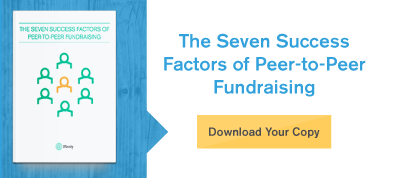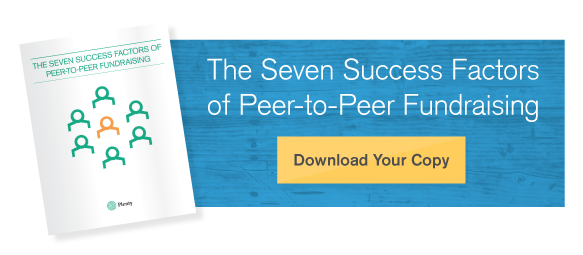How To Cultivate Long-term Corporate Sponsorships
Spring is in the air. And whether you are reading this from the West Coast and once again feeling victorious in your decision to avoid winter altogether, or if you’re reading this from a colder region and are proud to have survived the arctic blast, spring has arrived, which means your spring event season is beginning to ramp-up – along with your task list. The key is to make sure you continue to maintain and nurture the relationships important to the growth of your program, even as other priorities arise.
We talk about relationships a lot here at Plenty, especially when it comes to your constituents peer-to-peer relationships with their networks of friends, family, and coworkers. And while those relationships are the most important ones your organization has to foster, there are other relationships you have to consider as you plan and strategize your P2P events. An example of one such relationship is the one you have with your corporate sponsors.
Much like your peer-to-peer fundraiser relationships, there’s a strategy to finding the right corporate sponsors for your organization, and then maintaining your relationships with them. Use these four tips to build a strong and mutually beneficial corporate sponsorship strategy:
1. Put their needs first.
When planning your pitch to a potential corporate partner, keep the focus heavy on “them” rather than “you”. That is, focus on the benefits that their company will receive by sponsoring your nonprofit and not all the ways their sponsorship will help you. Highlight the benefits that will appeal to them the most. How do you know which benefits are most appealing to them? That’s simple – ask them and listen. Ask them questions aimed at getting to know what their internal sponsorship goals are - what is important to them - and then cater your sponsorship packages to those needs. Whether the benefits are opportunities for them to strengthen their community network, or educate the public about their products and services, keep them top of mind when constructing your pitch.
2. Don’t take every sponsorship offered to you.
It is tempting to go with any sponsor who is willing to support your cause, but before you jump on board with their offer make sure their values and business align with your mission. One example of a sponsorship gone wrong, is the partnership between The American Academy of Family Physicians and Coca-Cola. In 2010 the organization received a lot of backlash for partnering with Coca-Cola, since soda is a well-known contributor to obesity and conflicts with the nonprofits mission. This partnership, unfortunately, was not a long-term relationship and hurt the organization’s credibility.
To avoid this, make sure the potential sponsor’s brand fits with your cause, and doesn’t conflict with your mission. If you can find a sponsor with a brand that is also relevant to your mission, even better! Make your search easier by reaching out to corporate sponsors whose goals and core values align with your own from the beginning. You’ll both avoid a PR disaster and pave the way for a successful long-term partnership.
3. Show you care.
To keep your corporate partnerships going steady, create value for your sponsor and show it. For example, on event day, create an activation for your sponsor that goes above and beyond the typical sponsor table. Throughout your partnership, consider having one of your team members dedicated to managing sponsorship relations. After the event, show your appreciation with a thank-you note that includes a detailed event recap that shows the success of the partnership, including details on event attendance, funds raised, press coverage, and more.
4. Communicate their impact.
Bring your sponsors into your community and connect them to your cause. Just like your peer-to-peer fundraisers, your corporate sponsors need to see the impact of their investment. Connect them to your mission, and communicate the impact their time, money, and support has made. Help them understand the significant role they play in the program’s success, and in return, they’ll realize the impact they can have on your cause.
Whether you are fluent in corporate sponsorships or just beginning your search for your first sponsor keep these tips in mind during your searching and pitching process. A sponsorship should be a partnership – one that benefits both groups. Every sponsorship opportunity is not created equal. Avoid the temptation to accept any offer that comes your way. Instead search for partnerships that bring value to your mission and program. Do this, while creating value for your sponsors and you will cultivate long-term relationships that will drive your program’s success.
For more information on strengthening your P2P relationships in 2015 download our free Seven Success Factors e-book, which highlights the seven components critical to achieving fundraising success.
Share this
You May Also Like
These Related Stories

Seven Things All Peer-to-Peer Fundraising Leaders Should Do

Seven Things Keeping You From Peer-to-Peer Fundraising Success




No Comments Yet
Let us know what you think